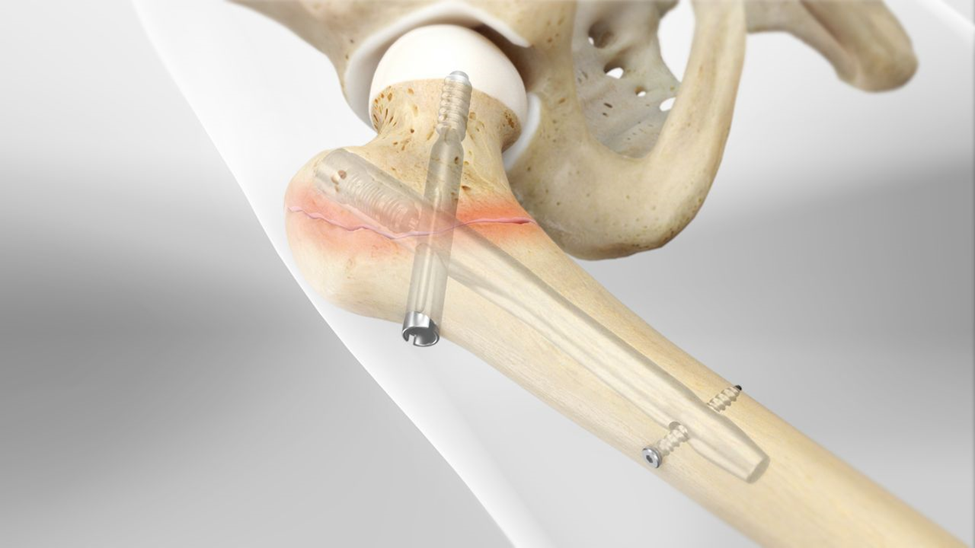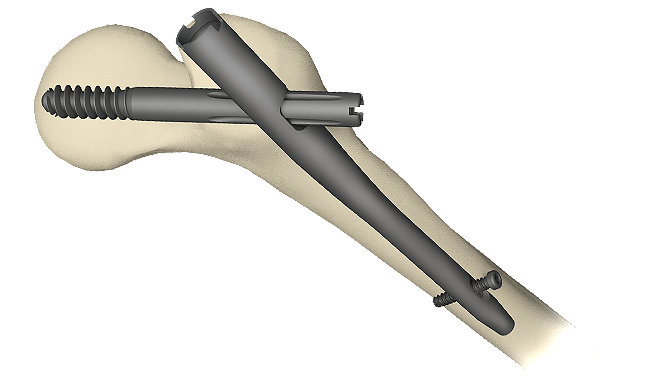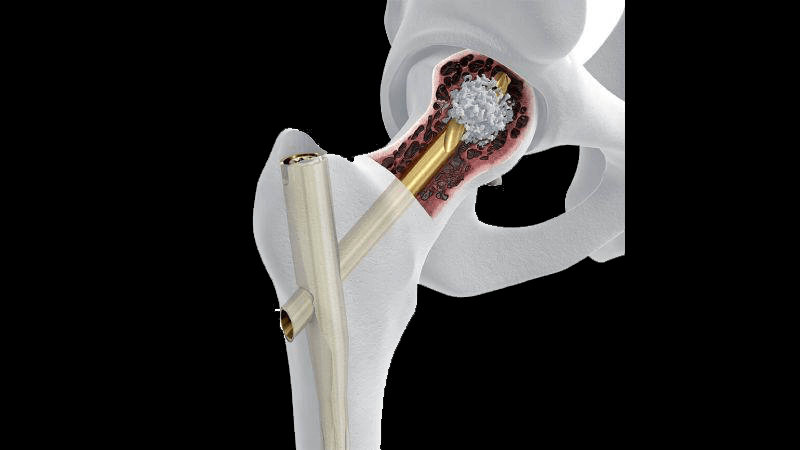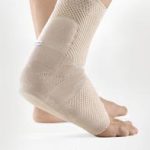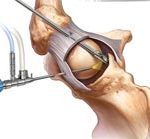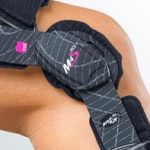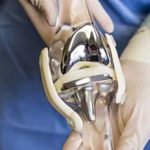HIP NAILING
Surgery is usually the best treatment for a broken (fractured) hip. Hip pinning involves:
- Getting the bone lined up correctly (reduction).
- Stabilizing broken bones. This is called internal fixation.
Hip pinning is usually for people who have fractures in which the bones can be properly aligned. A partial or total hip replacement may also be done to fix a broken hip.
The doctor will make one or two cuts (incisions) over the broken bone in your hip. The pieces of bone are moved into the right position. They are held in place using metal pins, screws, nails, rods, or plates. The surgery takes 2 to 4 hours.
Most doctors use general anesthesia, so you’ll be asleep. But the surgery is sometimes done with regional anesthesia. You’ll be sleepy but awake. You won’t feel the area of surgery. The choice depends on your doctor, on your overall health, and, to a degree, what you prefer.
How It Is Done
Hip repair means that the surgeon lines up the pieces of bone using metal plates, rods, nails and screws and then closes the skin over the surgery site. The metal pieces hold the bone together while it heals, and they stay in the leg permanently. This picture shows one type of hip fracture and the way it might be repaired. This surgery is also called hip pinning, or internal fixation.
Why Iran?
There are a lot of people who travel abroad every year to have hip nailing surgery, a good share of them chooses Iran, which is considered a popular place for medical tourism and orthopedic surgeries due to the low prices, great medical services, and high experience of the Iranian surgeons. On top of that, you can enjoy your time in Iran and visit some of its tourist attractions.
Why SinoheMedTour?
Arranging hip nailing surgery abroad is not as easy as it sounds. There is a lot of work that needs to be done. SinoheMedTour can help you and take care of everything since it is the biggest medical tourism facilitator in Iran. If you are seeking the treatment in Iran then SinoheMedTour can provide the treatment visa, hotel, interpreting, transportation and many more services. We will also make sure you have the best health care services and choose the best hospitals for you.
How much is the cost of hip nailing surgery in Iran?
The cost of hip nailing surgery varies from hospital and medical center to another. The prices of hip nailing surgery depend on some factors like hip screw cost and the experience of the surgeon. In general, you can have a hip screw procedure in Iran at prices starting that range from $2,000 to $3,000.
What To Expect
After surgery to repair a hip fracture, you will spend a few hours in the recovery room, and then you will go to your hospital room. You may see a metal triangle called a trapeze over your bed. You can use this to help move yourself around in bed. You will be very tired and will want to rest. Your nurse may also help turn you as you rest.
You will probably still have a tube that drains urine from your bladder (urinary catheter). And you will probably be getting fluids through a tube in your vein called an IV. You may also have a drain near the cut (incision) on your hip.
You may not feel hungry. You may feel sick to your stomach or constipated for a couple of days. This is common. Your nurse may give you stool softeners or laxatives to help with constipation.
You may have stockings that put pressure on your legs to prevent blood clots. Your nurse may also give you medicines and exercise instructions to help prevent clots.
Most people spend 2 to 4 days in the hospital. But depending on your health before the surgery, you may need to stay longer.
Your recovery
You will probably stay in the hospital for 2 to 4 days after surgery. Your rehabilitation program (rehab) will start at this time. If you don’t have someone to help you at home, you may go from the hospital to a short-term rehabilitation centre or a long-term care centre.
During the first week or so after surgery, you’ll need less and less pain medicine. For a few weeks after surgery, you’ll probably take medicine to prevent blood clots.
For several months, you may need the help of a walker or crutches. After that, you may need to walk with a cane. At first, you may need help with daily activities such as bathing, dressing, and cooking. Rehab will help you get back to your regular activities. But it will probably take at least 3 months to return to your normal routine. It may take 6 months to 1 year for you to fully recover. Some people, especially older people, are never able to move as well as they used to.
- You will slowly return to most of your activities.
- You may be able to walk on your own in 4 to 6 weeks. Until then, you will need crutches or a walker. After that, you may need to walk with a cane.
- Ask your doctor when you can drive again.
- You may be able to return to work in 4 weeks to 4 months, depending on your job.
- Your doctor will tell you when you can walk, swim, dance, golf, or bicycle. Ask your doctor about other activities you would like to do.
- Your doctor may advise you to avoid more strenuous activities, such as running or tennis, or those where a fall is possible, such as horseback riding or skiing.
Why It Is Done
Surgery is done to keep the broken pieces of the hip in place so they can heal faster. Some kinds of broken bones heal on their own in a cast. But a broken hip is not likely to heal well without surgery.
How Well It Works
Surgery usually works well, but you will need to be patient. Getting better will likely take a long time. And you may never be able to get around as well as you could before.
Surgery is usually the best choice after a hip fracture, because it stabilizes the bone so you can move around sooner. This helps prevent other problems such as pressure injuries and weakness. Surgery also makes it more likely that the bone will stay in place so the fractured leg is not a little shorter than the other leg after it is healed.
Risks
The risks of hip repair surgery can be divided into two groups:
- Risks of the surgery and recovery period, such as:
- Bleeding.
- Infection.
- Blood clots.
- Delayed wound healing.
- Problems with the anesthesia.
- Long-term risks that may happen, or may be noticed, months to years after the surgery. Some of these problems may happen with or without surgery but are more likely if you don’t have surgery. They include:
- Non-union. This means the pieces of bone don’t heal back together.
- Fracture around the screws, nails, or rods used to repair the bone.
- Difference in leg length. This means that when the fractured leg is healed, it is a little shorter than the other leg.
- Problems with the blood flow inside the bone. This can cause part of the bone to die (osteonecrosis).

